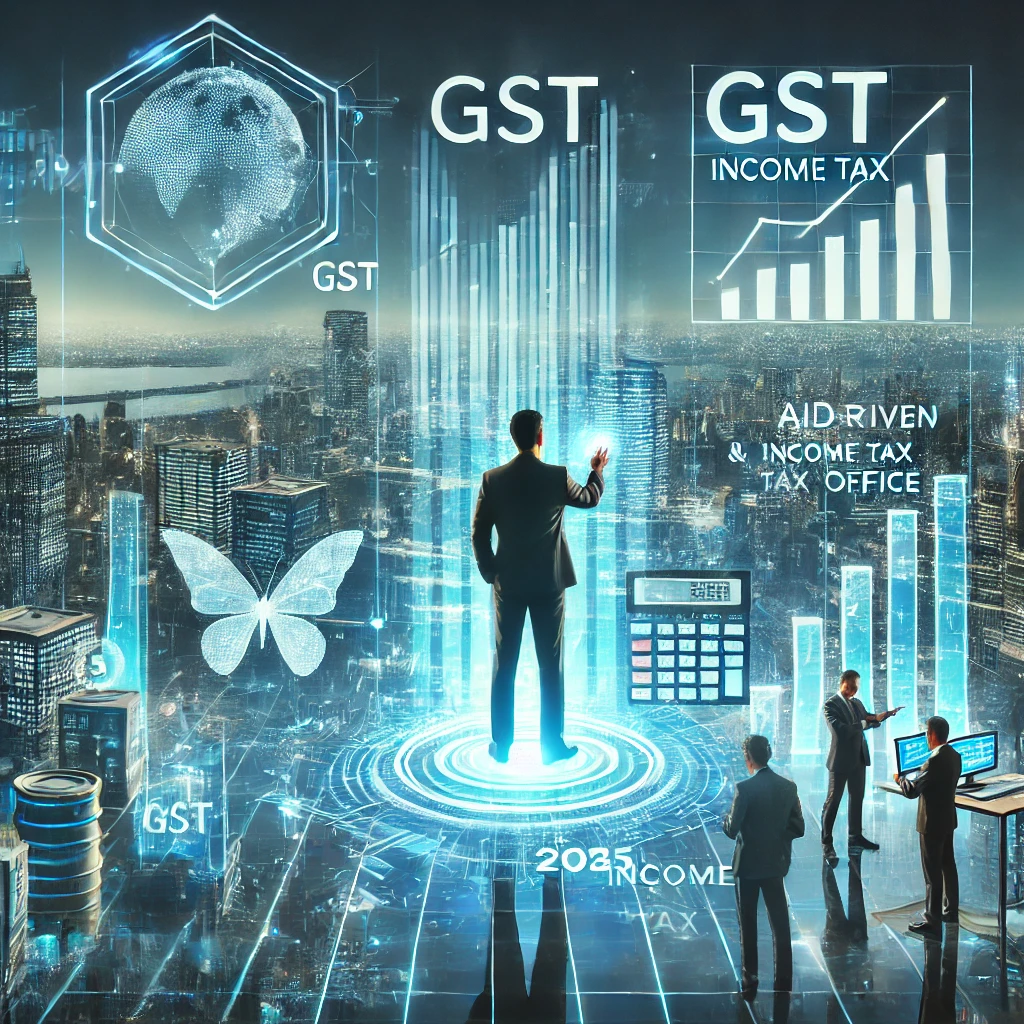Taxation plays a crucial role in shaping a nation’s economy, and as we step into 2025, significant changes in both Income Tax and Goods and Services Tax (GST) are expected to impact individuals and businesses alike. Governments across the world are continuously modifying tax laws to enhance compliance, reduce evasion, and boost economic growth. In India, recent policy updates have aimed to simplify tax structures, provide relief to taxpayers, and ensure a seamless tax collection process. This article delves into how Income Tax and GST are evolving in 2025 and what taxpayers should be prepared for.
Income Tax Changes in 2025
Adjustments in Tax Slabs and Rates
One of the most anticipated changes in 2025 is the revision of tax slabs and rates. The government is expected to introduce a more taxpayer-friendly approach by widening income slabs and reducing tax burdens on the middle class. This move aligns with efforts to boost disposable income, encourage spending, and drive economic growth.
Introduction of AI-Based Tax Assessments
With advancements in artificial intelligence, tax authorities are increasingly leveraging AI-based assessment systems to streamline tax filing processes. These automated systems help in identifying discrepancies, detecting fraudulent claims, and reducing human intervention, making the taxation process more transparent and efficient.
Enhanced Deductions and Exemptions
To provide relief to taxpayers, authorities are introducing new deductions and increasing the limits of existing ones. Key areas of focus include higher exemptions for home loans, medical expenses, and investments in retirement funds. The government is also promoting digital transactions by offering incentives for electronic payments.
Simplification of Tax Filing Procedures
In a bid to ease compliance, tax authorities are working towards simplifying the tax return filing process. Pre-filled tax return forms, integration with financial institutions, and the introduction of mobile-friendly filing platforms are some of the measures aimed at making tax compliance hassle-free for individuals and businesses.
GST Reforms in 2025
Rationalization of GST Slabs
One of the major GST reforms in 2025 is the rationalization of tax slabs to reduce complexity and enhance compliance. The government is considering merging the existing multiple tax slabs into fewer categories, which will simplify the tax structure for businesses and reduce classification-related disputes.
Digital Transformation in GST Compliance
Technology continues to play a pivotal role in tax administration. The implementation of AI-driven monitoring, real-time invoice matching, and blockchain-based compliance tracking are expected to enhance transparency and prevent tax evasion. These digital advancements will make GST compliance more efficient and error-free.
Expansion of GST Scope
To bring more businesses under the GST framework, authorities are lowering the threshold limits for GST registration. Additionally, sectors like petroleum, real estate, and alcohol, which were previously outside the GST regime, are expected to be gradually integrated to ensure uniformity in taxation.
Automated GST Refunds and Input Tax Credit (ITC) Mechanism
Delays in GST refunds and ITC claims have been a persistent challenge for businesses. In 2025, automated refund processing systems are being introduced to ensure faster disbursement of refunds. Moreover, an improved ITC reconciliation process will allow businesses to claim credits seamlessly, reducing cash flow burdens.
Impact of Taxation Changes on Individuals and Businesses
The modifications in Income Tax and GST in 2025 are expected to have a broad impact on various stakeholders. Individuals will benefit from reduced tax rates, increased exemptions, and simplified filing procedures, leading to higher disposable income. Businesses, especially small and medium enterprises (SMEs), will experience an improved compliance framework, reduced paperwork, and better cash flow management due to quicker GST refunds.
Challenges and Future Outlook
Despite these progressive changes, challenges remain in ensuring seamless implementation. Tax authorities must focus on educating taxpayers about new policies, addressing concerns related to digital security, and maintaining a balance between revenue collection and taxpayer relief. Looking ahead, the future of taxation is expected to be driven by further digitization, global tax cooperation, and continuous policy refinements to align with evolving economic landscapes.
Conclusion
As we navigate through 2025, the evolution of Income Tax and GST marks a significant shift toward a more transparent, efficient, and taxpayer-friendly system. The adoption of technology, simplification of processes, and rationalization of tax structures are set to make compliance easier while fostering economic growth. Taxpayers, both individuals and businesses, should stay informed about these changes to maximize benefits and ensure smooth compliance in the coming years.
Disclaimer:The content provided in this blog post is for informational purposes only. The opinions expressed here are those of the author and do not necessarily reflect the views or opinions of Business Rahi. While we strive to ensure the accuracy and reliability of the information presented, we cannot guarantee the completeness, reliability, or suitability of the content for any particular purpose. Any reliance you place on such information is strictly at your own risk.
Buisiness Rahi is not responsible for any losses or damages arising from the use of the information shared in this blog post. We may feature links to external websites, but these do not constitute endorsements or recommendations. We encourage readers to conduct their own research and consult with professionals before making any business decisions.
For more information about our brand or policies, please refer to our official website or contact us directly.

